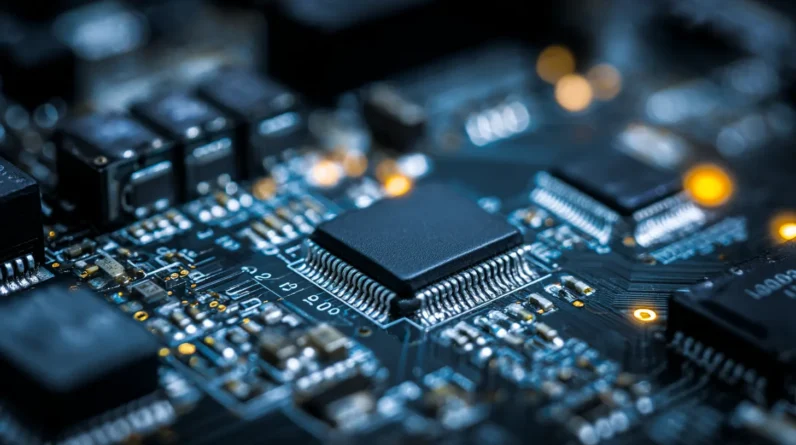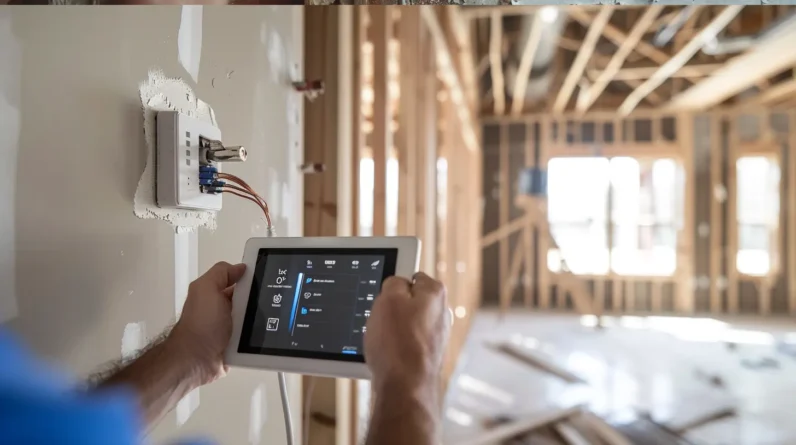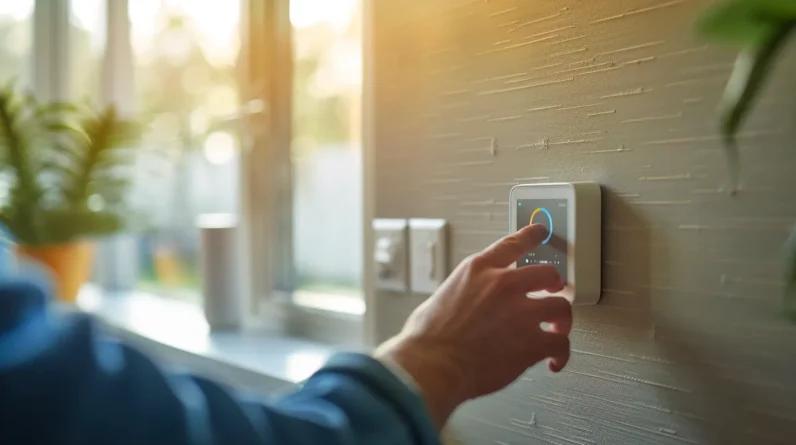
The proliferation of smart gadgets has brought about a paradigm shift in our daily lives, offering convenience and efficiency. However, their impact on environmental sustainability extends beyond mere convenience.
This article explores the dual nature of smart gadgets as both contributors to and potential solutions for environmental challenges. By analyzing their energy efficiency, e-waste management implications, and potential for promoting sustainable living through smart homes, we aim to provide insights into how these technologies can be harnessed for a greener future.
The Rise of Smart Gadgets: A Double-Edged Sword for the Environment
The increase in the use of smart gadgets presents both positive and negative implications for environmental sustainability.
On the one hand, smart gadgets have the potential to reduce carbon emissions and contribute to resource conservation. For instance, smart thermostats can optimize energy usage, leading to reduced carbon emissions from heating and cooling systems. Similarly, smart water meters can enable efficient water management, mitigating resource depletion.
On the other hand, the production and disposal of smart gadgets contribute to carbon emissions and resource depletion. The manufacturing process requires significant amounts of energy and raw materials, including rare earth metals that are often sourced unsustainably. Moreover, improper disposal of electronic waste leads to harmful environmental consequences.
To address these issues, manufacturers need to prioritize sustainable design practices by using eco-friendly materials and reducing energy consumption during production. Additionally, consumers must be encouraged to responsibly recycle their outdated gadgets instead of disposing them in landfills. Public awareness campaigns can play a crucial role in educating individuals about the importance of proper e-waste management.
Energy Efficiency: How Smart Gadgets Can Help Reduce Environmental Footprint
Energy efficiency plays a crucial role in reducing the environmental footprint of technology. Smart gadgets, with their ability to monitor and optimize energy usage, offer significant potential for improving energy efficiency and promoting sustainability.
Energy monitoring features integrated into smart devices enable users to track and analyze their energy consumption patterns, helping them make informed choices about how they use electricity. This data-driven approach can lead to a more conscious consumption behavior and reduce unnecessary energy waste.
Furthermore, sustainable design principles can be applied to smart gadget manufacturing processes. By prioritizing materials that are environmentally friendly, recyclable, and have low carbon footprints, manufacturers can minimize the negative impact on the environment throughout a product’s lifecycle. Additionally, designing devices with longevity in mind encourages responsible consumption by reducing electronic waste.
E-Waste Management: The Hidden Consequences of Smart Gadgets
E-waste management poses significant challenges due to the proliferation of technology devices and their disposal methods. The rapid advancement of smart gadgets has led to a surge in electronic waste, contributing to environmental degradation and health hazards.
Key issues associated with e-waste management include:
Improper disposal: Many individuals discard their old electronic devices in landfills or incinerate them, leading to toxic materials such as lead, mercury, and cadmium leaching into the environment.
Limited recycling infrastructure: Inadequate facilities for electronic recycling hinder the recovery of valuable components and precious metals from discarded devices.
Lack of awareness: Insufficient knowledge about the importance of electronic recycling and the potential negative consequences of improper disposal exacerbates the problem.
To address these challenges, promoting a circular economy approach is crucial. This involves designing products that are easier to recycle, establishing collection points for e-waste, and raising public awareness regarding responsible disposal practices.
Transitioning into the subsequent section on ‘smart homes: promoting sustainable living through technology,’ it is important to explore how advancements in smart gadgets can contribute towards creating more environmentally friendly living spaces.
Smart Homes: Promoting Sustainable Living Through Technology
Transitioning into the subsequent section on sustainable living through technology, an examination of how smart home advancements can contribute to more eco-friendly living spaces becomes imperative.
Smart home automation offers numerous opportunities for promoting sustainable practices within residential environments. By integrating smart technologies, homeowners can optimize energy consumption, reduce carbon emissions, and enhance overall efficiency. Sustainable home design principles, such as passive heating and cooling systems, energy-efficient appliances, and intelligent lighting solutions, can be seamlessly integrated into smart homes.
These advancements enable homeowners to monitor and control their energy usage in real-time, thereby facilitating informed decision-making regarding resource consumption. Additionally, smart home automation fosters the adoption of renewable energy sources by enabling efficient integration with solar panels or wind turbines.
Such technological innovations hold great potential for creating environmentally conscious living spaces that align with the goals of a freedom-seeking audience interested in sustainable living practices.
The Future of Smart Gadgets: Innovations for a Greener Tomorrow
Advancements in technology have led to the development of innovative and efficient solutions that can contribute to a more environmentally friendly future. This is particularly evident in the areas of sustainable transportation and eco-friendly manufacturing.
– Sustainable transportation:
– Electric vehicles (EVs) are becoming increasingly popular due to their lower carbon emissions compared to traditional gasoline-powered cars.
– Public transportation systems incorporating clean energy sources such as hybrid or electric buses are being implemented in many cities, reducing air pollution and congestion.
– Bike-sharing programs and improved cycling infrastructure encourage greener commuting options, promoting physical activity while reducing reliance on fossil fuels.
– Eco-friendly manufacturing:
– The use of advanced technologies like 3D printing allows for more efficient production processes, reducing waste and minimizing environmental impact.
– Renewable energy sources, such as solar panels or wind turbines, power manufacturing facilities, decreasing dependence on non-renewable resources.
– Adoption of sustainable materials and practices ensures responsible sourcing, waste reduction, and recycling throughout the manufacturing process.
Through these advancements in technology, a future with sustainable transportation systems and eco-friendly manufacturing practices becomes not only possible but also an essential step towards a greener tomorrow.
Frequently Asked Questions (FAQs)
What Are the Potential Health Risks Associated With Using Smart Gadgets?
Potential health risks associated with using smart gadgets include exposure to electromagnetic radiation. Research suggests that prolonged exposure to high levels of electromagnetic radiation may increase the risk of certain health conditions. Further studies are needed to fully understand the long-term effects.
How Do Smart Gadgets Contribute to the Overall Energy Consumption of a Household?
Smart gadgets have a significant impact on household energy consumption. Their increasing popularity and usage contribute to the overall increase in energy demand, which has negative implications for environmental sustainability. Efforts must be made to promote energy efficiency and sustainable living through smart devices.
Are There Any Regulations in Place to Ensure the Responsible Disposal of Smart Gadgets?
Regulations are in place to ensure responsible disposal of smart gadgets. These regulations aim to address the growing issue of electronic waste (e-waste) and promote sustainable practices for disposing of these devices, reducing their environmental impact.
Can Smart Homes Actually Help Save Money on Utility Bills?
Smart home automation, through its emphasis on energy efficiency, has the potential to save money on utility bills. By intelligently managing heating and cooling systems, lighting, and appliances, smart homes can optimize energy usage and reduce costs.
What Are Some Innovative Ways That Smart Gadgets Can Be Used to Promote Environmental Education and Awareness?
Smart gadgets can serve as effective educational tools to promote environmental awareness and activism. Through interactive features, real-time data analysis, and connectivity, smart gadgets enable individuals to engage with environmental issues in innovative and impactful ways.
Conclusion
In conclusion, the proliferation of smart gadgets has undoubtedly brought about convenience and efficiency in our lives.
However, this convenience comes at a cost to our environment. While these devices may claim to be energy-efficient, the hidden consequences of e-waste pose a significant challenge to sustainability efforts.
Despite the promises of smart homes promoting sustainable living, it is crucial to remain critical and mindful of their impact on the environment.
As we look towards a greener tomorrow, it is imperative that innovations prioritize environmental sustainability over mere convenience.







